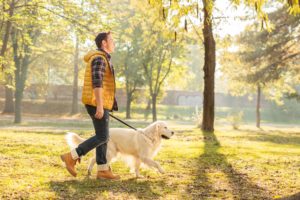Non-24-Hour Sleep Wake Disorder
What it is, who is affected by it, what causes it, and what treatments are available
For most people, the body clock follows a 24-hour cycle known as the circadian rhythm. Sleep timing, appetite, and energy levels are all impacted by this circadian rhythm. A master clock in the brain called the suprachiasmatic nucleus (SCN) controls circadian rhythm.
Most people’s innate body clock is actually slightly longer than 24 hours . However, the SCN enables us to stay synchronized to the 24-hour rhythm using cues from ambient light and other “zeitgebers,” or time-givers. Among other things, the SCN triggers sleep onset by signaling the release of the sleep hormone, melatonin, when it gets dark.
Non-24-hour sleep-wake disorder, formerly called free-running rhythm disorder or hypernychthemeral syndrome, refers to a condition in which the body clock becomes desynchronized from the environment.
What Is Non-24-Hour Sleep-Wake Disorder?
Individuals with non-24-hour sleep-wake disorder (N24SWD) have a circadian rhythm that is shorter or, more often, slightly longer than 24 hours. This causes sleep and wake times to get pushed progressively earlier or later, usually by one or two hours at a time. Over days or weeks, the circadian rhythm becomes desynchronized from regular daylight hours.
As a consequence of this ever-shifting rhythm, individuals with N24SWD experience inappropriate fluctuations in appetite, mood, and alertness. During periods when their body clock is heavily desynchronized, they show a natural preference for sleeping in the middle of the day and difficulty sleeping at night. Several weeks later, they may not show any symptoms at all as their internal clock catches up with daylight once more.
Attempts to maintain a regular sleep-wake cycle are unsuccessful , even when supplemented by common solutions such as caffeine . Over the long term, desynchronization from the innate circadian rhythm may have adverse health consequences .
Individuals with non-24-hour sleep-wake disorder often have difficulty keeping work, school, or social commitments. They may develop depression due to the stress of not being able to keep a normal schedule, or as a side effect of sleeping during the day and not getting enough sunlight.
Non-24-Hour Sleep-Wake Disorder vs. Other Circadian Disorders
Non-24-hour sleep-wake disorder is one of six circadian rhythm sleep disorders. It is considered an intrinsic sleep-wake disorder because the problem is mostly due to internal factors instead of external factors, such as jet lag or shift work.
Other intrinsic circadian rhythm disorders include advanced and delayed sleep-wake phase disorders, in which the sleep-wake cycle is pushed significantly forward or backward, and irregular sleep-wake rhythm disorder, in which individuals display a fragmented sleep-wake cycle with napping throughout the day and long periods awake at night.

What Causes Non-24-Hour Sleep-Wake Disorder?
Non-24-hour sleep-wake disorder is most common in people with total blindness , due to the lack of light input reaching the internal clock. It’s estimated that approximately 50% of completely blind people have N24SWD. Not all blind people suffer from this disorder, because some retain the ability to perceive light to a certain extent.
For many people with N24SWD, the circadian rhythm drifts faster when bedtime occurs during the day and slows down when bedtime coincides with night . Researchers hypothesize that blind people may display a weak circadian response to factors such as sleep schedules, physical activity, and possibly even light, but not a strong enough response to establish a regular circadian rhythm.
Most people with N24SWD have between a 24 and a 25-hour sleep cycle. The further the cycle is from 24 hours, the faster disruptions to their sleep-wake schedule occur.
Can a Sighted Person Have Non-24-Hour Sleep-Wake Disorder?
Non-24-hour sleep-wake disorder can also happen in sighted people . Symptoms manifest as generic daytime sleepiness and nighttime insomnia, so N24SWD is often misdiagnosed as another sleep disorder in sighted people. As a result, many sighted people have the disorder for years before receiving a diagnosis.
It’s unclear what causes non-24-hour sleep-wake disorder in sighted people. The largest study ever done on sighted people with N24SWD found that the majority were male, with symptoms that started in the teens or twenties. Non-24-hour sleep-wake disorder may have a genetic component , though it rarely runs in families and may not develop unless a person has more than one risk factor .
A significant percentage of sighted people with N24SWD also have a prior diagnosis of a mental health disorder such as major depression, bipolar disorder, obsessive-compulsive disorder, and schizophrenia or schizoid personality. For these individuals, N24SWD may have developed as a result of social isolation and other side effects of their disorder. Researchers suspect that N24SWD may sometimes develop naturally in people as a side effect of staying up late for many years and getting too much nighttime exposure to light.
In some cases, non-24-hour sleep-wake disorder in sighted people may be linked to a traumatic brain injury. Damage to cells in the retina , to the pathway linking the retina and the SCN, to the pathway that regulates melatonin secretion, or to the SCN itself may disrupt or weaken the body clock.
Can Non-24-Hour Sleep-Wake Disorder Be Treated?
Though non-24-hour sleep-wake disorder is assumed to be a lifelong condition, certain treatments can help restore a 24-hour rhythm. Accompanying symptoms such as daytime sleepiness tend to resolve once the individual adapts to a routine that is synchronized with the social day and night. However, an individual’s body clock will generally become desynchronized again once they stop these therapies.
Non-24-hour sleep-wake disorder is commonly treated with melatonin supplements or the FDA-approved melatonin receptor agonist, tasimelteon. Taken at a specified hour before the desired bedtime, these substances help prepare the body for sleep at the same time every night.
Using bright light therapy in the morning may also be an option for N24SWD in sighted people.

Still have questions? Ask our community!
Join our Sleep Care Community — a trusted hub of sleep health professionals, product specialists, and people just like you. Whether you need expert sleep advice for your insomnia or you’re searching for the perfect mattress, we’ve got you covered. Get personalized guidance from the experts who know sleep best.
References
15 Sources
-
Quera Salva, M. A., Hartley, S., Léger, D., & Dauvilliers, Y. A. (2017). Non-24-hour sleep-wake rhythm disorder in the totally blind: Diagnosis and management. Frontiers in Neurology, 8, 686.
https://pubmed.ncbi.nlm.nih.gov/29326647/ -
Schwab, R.J. (2020, June). Circadian rhythm sleep disorders. Merck Manual Professional Version.
https://www.merckmanuals.com/professional/neurologic-disorders/sleep-and-wakefulness-disorders/circadian-rhythm-sleep-disorders -
Micic, G., Lovato, N., Gradisar, M., Burgess, H. J., Ferguson, S. A., & Lack, L. (2016). Circadian melatonin and temperature taus in delayed sleep-wake phase disorder and non-24-hour sleep-wake rhythm disorder patients: An ultradian constant routine study. Journal of Biological Rhythms, 31(4), 387–405.
https://pubmed.ncbi.nlm.nih.gov/27312974/ -
St Hilaire, M. A., & Lockley, S. W. (2015). Caffeine does not entrain the circadian clock but improves daytime alertness in blind patients with non-24-hour rhythms. Sleep Medicine, 16(6), 800–804.
https://pubmed.ncbi.nlm.nih.gov/25891543/ -
Karatsoreos, I. N., Bhagat, S., Bloss, E. B., Morrison, J. H., & McEwen, B. S. (2011). Disruption of circadian clocks has ramifications for metabolism, brain, and behavior. Proceedings of the National Academy of Sciences of the United States of America, 108(4), 1657–1662.
https://pubmed.ncbi.nlm.nih.gov/21220317/ -
Hayakawa, T., Uchiyama, M., Kamei, Y., Shibui, K., Tagaya, H., Asada, T., Okawa, M., Urata, J., & Takahashi, K. (2005). Clinical analyses of sighted patients with non-24-hour sleep-wake syndrome: a study of 57 consecutively diagnosed cases. Sleep, 28(8), 945–952.
https://pubmed.ncbi.nlm.nih.gov/16218077/ -
Auger, R. R., Burgess, H. J., Emens, J. S., Deriy, L. V., Thomas, S. M., & Sharkey, K. M. (2015). Clinical Practice Guideline for the Treatment of Intrinsic Circadian Rhythm Sleep-Wake Disorders: Advanced Sleep-Wake Phase Disorder (ASWPD), Delayed Sleep-Wake Phase Disorder (DSWPD), Non-24-Hour Sleep-Wake Rhythm Disorder (N24SWD), and Irregular Sleep-Wake Rhythm Disorder (ISWRD). An Update for 2015: An American Academy of Sleep Medicine Clinical Practice Guideline. Journal of clinical sleep medicine : JCSM : official publication of the American Academy of Sleep Medicine, 11(10), 1199–1236.
https://pubmed.ncbi.nlm.nih.gov/26414986/ -
Flynn-Evans, E. E., & Lockley, S. W. (2016). A pre-screening questionnaire to predict non-24-hour sleep-wake rhythm disorder (N24HSWD) among the blind. Journal of Clinical Sleep Medicine, 12(05), 703–710.
https://pubmed.ncbi.nlm.nih.gov/26951421/ -
Emens, J. S., Laurie, A. L., Songer, J. B., & Lewy, A. J. (2013). Non-24-hour disorder in blind individuals revisited: Variability and the influence of environmental time cues. Sleep, 36(7), 1091–1100.
https://pubmed.ncbi.nlm.nih.gov/23814347/ -
Malkani, R. G., Abbott, S. M., Reid, K. J., & Zee, P. C. (2018). Diagnostic and treatment challenges of sighted non-24-hour sleep-wake disorder. Journal of Clinical Sleep Medicine, 14(4), 603–613.
https://pubmed.ncbi.nlm.nih.gov/29609703/ -
Garbazza C. (2018). Non-24-hour sleep-wake disorder in sighted patients: Dealing with an orphan disease. Journal of Clinical Sleep Medicine, 14(8), 1445–1446.
https://pubmed.ncbi.nlm.nih.gov/30092908/ -
Kripke, D. F., Klimecki, W. T., Nievergelt, C. M., Rex, K. M., Murray, S. S., Shekhtman, T., Tranah, G. J., Loving, R. T., Lee, H. J., Rhee, M. K., Shadan, F. F., Poceta, J. S., Jamil, S. M., Kline, L. E., & Kelsoe, J. R. (2014). Circadian polymorphisms in night owls, in bipolars, and in non-24-hour sleep cycles. Psychiatry Investigation, 11(4), 345–362.
https://pubmed.ncbi.nlm.nih.gov/25395965/ -
Mishima, K. (2017). Pathophysiology and strategic treatment of sighted non-24-h sleep–wake rhythm disorders. Sleep and Biological Rhythms, 15, 11–20.
http://link.springer.com/10.1007/s41105-016-0076-4 -
Abbott, S. M., Choi, J., Wilson, J., & Zee, P. C. (2020). Melanopsin dependent phototransduction is impaired in delayed sleep-wake phase disorder and sighted non-24-hour sleep-wake rhythm disorder. Sleep, zsaa184.
https://pubmed.ncbi.nlm.nih.gov/32926153/ -
U.S. National Library of Medicine (2020, December 10). Hetlioz: Tasimelteon capsule., Retrieved May 18, 2022, from
https://dailymed.nlm.nih.gov/dailymed/drugInfo.cfm?setid=ca4a9b63-708e-49e9-8f9b-010625443b90




